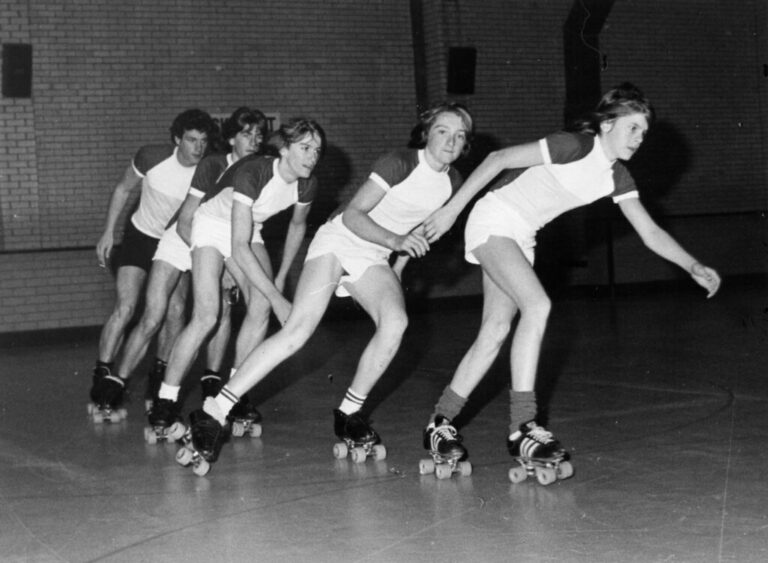General Rules of Indoor Triathlon
Get ready for an indoor triathlon! Make sure you meet registration requirements, including age limits. Double-check essential gear like a triathlon suit, cycling shoes, and swim cap. Organize your equipment wisely at the changeover area for a smooth race. Focus on timing accuracy and understand scoring methods for a top performance. Behave with etiquette, fairness, and respect, creating a positive competition setting. Remember safety protocols and emergency plans for a secure event. This is just the start of the many rules that govern indoor triathlons! Ready to ace the race?
Registration Requirements
When enrolling in an indoor triathlon, you must make sure you meet all registration requirements to secure your spot in the event. Age restrictions are common in triathlons, so make certain you check the minimum age allowed to participate. Additionally, athlete qualifications may be necessary, such as previous experience in similar events or certifications. Make sure you meet these criteria before signing up.
Registration fees are another vital aspect to think about. Be aware of the cost to participate in the indoor triathlon and make sure you are prepared to make the payment. Sometimes, there may be early bird discounts or additional fees for late registration, so keep an eye on deadlines.
Before participating, you will likely need to fill out waiver forms. These forms are essential for acknowledging the risks involved in the event and releasing the organizers from liability. Take the time to read through the waiver carefully and ask questions if needed before signing it.
Equipment Regulations
Ready to tackle the Equipment Regulations for your upcoming indoor triathlon? Let's start by going through the Required Gear Checklist to make certain you have all the necessary equipment. Next, we'll discuss the Safety Equipment Guidelines to guarantee a safe and successful race. Finally, we'll cover the Uniform and Apparel regulations to make sure you're all set for race day. Get ready to gear up!
Required Gear Checklist
To ensure you are fully prepared for the indoor triathlon, familiarize yourself with the required gear checklist which outlines the equipment regulations. When it comes to gear maintenance and upgrade options, ensuring your equipment is in top condition is essential for best performance. Proper fitting and comfort considerations are key to avoiding discomfort and potential injuries during the event. Here are some essential items to have on your gear checklist:
- Well-fitted triathlon suit or wetsuit.
- Quality cycling shoes for the bike segment.
- Running shoes with proper support for the run.
- Swim goggles to protect your eyes during the swim leg.
Safety Equipment Guidelines
Observing the safety equipment guidelines is crucial to ensure a secure and successful indoor triathlon experience. Ensuring your safety equipment fits well and provides comfort can have a substantial impact on your performance during the event. Here are some essential safety equipment guidelines to keep in mind:
| Safety Equipment | Guidelines |
|---|---|
| Helmet | Must be worn during the cycling leg |
| Swim Cap | Required for the swimming leg |
| Running Shoes | Proper footwear for the running leg |
| Water Bottle | Stay hydrated throughout the event |
| Towel | Use for quick drying off between changes |
Adhering to these safety equipment guidelines will not only keep you safe but also enhance your overall indoor triathlon experience.
Uniform and Apparel
After ensuring your safety by following the necessary guidelines for safety equipment, it's time to focus on the uniform and apparel regulations for your indoor triathlon. When it comes to what you wear during the event, comfort and functionality are key. Here are some essential guidelines to keep in mind:
- Clothing Options: Choose moisture-wicking fabrics to stay dry and comfortable throughout the race.
- Fashion Trends: While performance should be your priority, don't be afraid to showcase your personal style with vibrant colors or unique patterns.
- Gear Reviews: Invest in high-quality triathlon-specific apparel to enhance your performance and overall experience.
- Brand Comparisons: Research different brands to find the best fit and quality that align with your preferences and budget.
Transition Area Guidelines
When setting up your changeover zone for an indoor triathlon, make sure all your gear is neatly organized and easily accessible. Switch logistics play an important role in guaranteeing a smooth and efficient race experience. Begin by arranging your equipment in a logical sequence to facilitate quick changes between the swim, bike, and run segments. Lay out your gear such as shoes, helmet, towel, and race belt in a systematic order that follows the flow of the race.
Effective equipment organization can save you valuable time during handovers. Place your bike near the entrance of the exchange area for a swift start to the cycling leg. Keep your running shoes and any additional items neatly arranged for easy grabbing. Consider using a small towel to wipe off any excess moisture before changing gear. Additionally, make sure that your race belt and any nutrition or hydration supplies are within arm's reach.
Prioritize accessibility and visibility when setting up your handover area. Avoid clutter and maintain a clean space to prevent any confusion during the race. Familiarize yourself with the layout so that you can navigate through your gear effortlessly. By following these guidelines for setting up your changeover area, you can optimize your performance and make the most of your indoor triathlon experience.
Timing and Scoring Protocols
Alright, let's get into the nitty-gritty of Timing and Scoring Protocols. When it comes to indoor triathlons, timing accuracy is essential for a fair competition. We'll also compare the various scoring methods used in these events to give you a thorough understanding of how your performance is evaluated.
Timing Accuracy Importance
Ensuring precise timing accuracy is paramount in indoor triathlons, as it forms the cornerstone of fair competition and accurate scoring protocols. When it comes to timing accuracy and race strategy, there are several key points to take into account:
- Transitions: Efficiently moving from one discipline to another can impact your overall time.
- Split Times: Monitoring your performance in each segment helps you adjust your pace accordingly.
- Timing Equipment: Using reliable timing devices is essential for accurate results.
- Backup Systems: Implementing backup timing systems guarantees data integrity and fairness in case of technical issues.
Scoring Methods Comparison
To effectively compare scoring methods in indoor triathlons, understanding the nuances of timing and scoring protocols is vital for participants seeking to optimize their performance and results. Scoring methods in indoor triathlons can vary, with some races using a points-based system where athletes earn points based on their performance in each segment, while others may use a cumulative time approach where the total time taken to complete all segments determines rankings. Athlete rankings can also be influenced by factors like changeover times and penalties incurred during the race. It's essential for competitors to familiarize themselves with the specific scoring method being used in the event they are participating in to strategize effectively and aim for a higher placement.
Conduct and Sportsmanship Rules
When engaging in an indoor triathlon, it is crucial to adhere to the conduct and sportsmanship rules established to ensure a fair and enjoyable event for all competitors. Observing proper etiquette and displaying good sportsmanship not only enhances the overall experience for everyone involved but also contributes to a positive and inclusive atmosphere throughout the competition. Here are some key points to keep in mind:
- Etiquette Expectations: Respect other participants by following the designated course and not cutting corners to gain an unfair advantage.
- Fair Play Guidelines: Play by the rules and avoid any form of cheating or unsportsmanlike behavior that could compromise the integrity of the event.
- Behavior Standards: Treat fellow competitors, volunteers, and event staff with courtesy and respect, creating a welcoming environment for all.
- Sportsmanship Expectations: Celebrate the achievements of others, whether they are your fellow competitors or those who finish ahead of you, promoting a sense of camaraderie and mutual support throughout the event.
Safety Precautions and Emergency Procedures
Prioritize your safety by familiarizing yourself with the designated safety precautions and emergency procedures in place for the indoor triathlon event. First aid stations will be strategically located throughout the event venue, equipped to provide immediate assistance if needed. These stations will have trained medical staff ready to address any minor injuries or medical concerns that may arise during the competition. It's essential to be aware of the locations of these stations before starting the race.
In the unlikely event of a more serious emergency, the indoor triathlon event will have a thorough emergency response plan in effect. Trained personnel will be on standby to handle any critical situations and coordinate with local emergency services if necessary. Familiarize yourself with the emergency procedures outlined by the event organizers to guarantee a quick and effective response in case of an emergency.
Frequently Asked Questions
Can Participants Use a Stationary Bike Instead of a Regular Bike During the Cycling Portion of the Indoor Triathlon?
Yes, you can use a stationary bike during the indoor triathlon's cycling segment. While it may differ in feel from a regular bike, focus on maintaining cycling efficiency and adjusting resistance for a challenging workout.
Are Headphones or Music Players Allowed During the Race?
Hey, rockstar! While music can be your training buddy, during the race, it's a no-go. Safety comes first, and distractions can mess with your performance. Stay focused, and save those music preferences for your post-triathlon celebration!
Is There a Minimum or Maximum Age Requirement for Participants?
You're in luck! There are typically no maximum age restrictions for participants in indoor triathlons. Whether you're a seasoned athlete or new to the game, everyone is welcome. As for equipment options, feel free to bring your preferred gear.
Are Spectators Allowed in the Transition Area?
When it comes to spectator etiquette at indoor triathlons, it's important to respect the boundaries of the changeover area. While audience participation is encouraged, remember that access to the changeover zone is typically limited to athletes only.
Can Participants Wear Wetsuits During the Swimming Portion of the Indoor Triathlon?
You can't wear wetsuits during the swimming part of the indoor triathlon. The rules don't allow it. But hey, you'll still rock it in your swimsuit! Stay confident, and crush that swim!
Conclusion
Now that you know the general rules of indoor triathlon, you are ready to plunge into the exciting world of multisport competition. So lace up your shoes, hop on your bike, and immerse into the pool with confidence. Remember, every stroke, pedal, and stride counts towards your ultimate goal. So go out there and conquer the course like a true triathlon warrior, leaving a trail of determination and perseverance in your wake.






